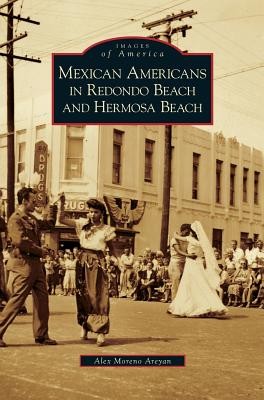
- We will send in 10–14 business days.
- Author: Alex Moreno Areyan
- Publisher: Arcadia Publishing Library Editions
- Year: 2007
- Pages: 130
- ISBN-10: 1531628648
- ISBN-13: 9781531628642
- Format: 17 x 24.4 x 1 cm, hardcover
- Language: English
- SAVE -10% with code: EXTRA
Mexican Americans in Redondo Beach and Hermosa Beach (e-book) (used book) | bookbook.eu
Reviews
Description
The century-old presence of Mexican Americans in Redondo Beach and Hermosa Beach is an important, colorful part of the history of Los Angeles County's South Bay region. This evocative pictorial history documents the ways in which this group left significant marks on the economic, agricultural, academic, religious, professional, and governmental fabric of both communities. World War II heroes, star athletes, lawyers, professors, teachers, city councilmen, a judge, an astrophysicist, and many other professionals have come from this heritage. The first known Mexican American in Redondo Beach was Mauro Gonzales, who arrived in 1900 to unload ships at the city's old wooden pier. He was followed in 1910 by Domingo Moreno, who fostered 12 children, and Mauricio Colin, who had 13, after they escaped the Mexican Revolution. They initiated a large and vibrant Mexican American community, one that has virtually been ignored by conventional histories.
EXTRA 10 % discount with code: EXTRA
The promotion ends in 20d.08:36:47
The discount code is valid when purchasing from 10 €. Discounts do not stack.
- Author: Alex Moreno Areyan
- Publisher: Arcadia Publishing Library Editions
- Year: 2007
- Pages: 130
- ISBN-10: 1531628648
- ISBN-13: 9781531628642
- Format: 17 x 24.4 x 1 cm, hardcover
- Language: English English
The century-old presence of Mexican Americans in Redondo Beach and Hermosa Beach is an important, colorful part of the history of Los Angeles County's South Bay region. This evocative pictorial history documents the ways in which this group left significant marks on the economic, agricultural, academic, religious, professional, and governmental fabric of both communities. World War II heroes, star athletes, lawyers, professors, teachers, city councilmen, a judge, an astrophysicist, and many other professionals have come from this heritage. The first known Mexican American in Redondo Beach was Mauro Gonzales, who arrived in 1900 to unload ships at the city's old wooden pier. He was followed in 1910 by Domingo Moreno, who fostered 12 children, and Mauricio Colin, who had 13, after they escaped the Mexican Revolution. They initiated a large and vibrant Mexican American community, one that has virtually been ignored by conventional histories.


Reviews